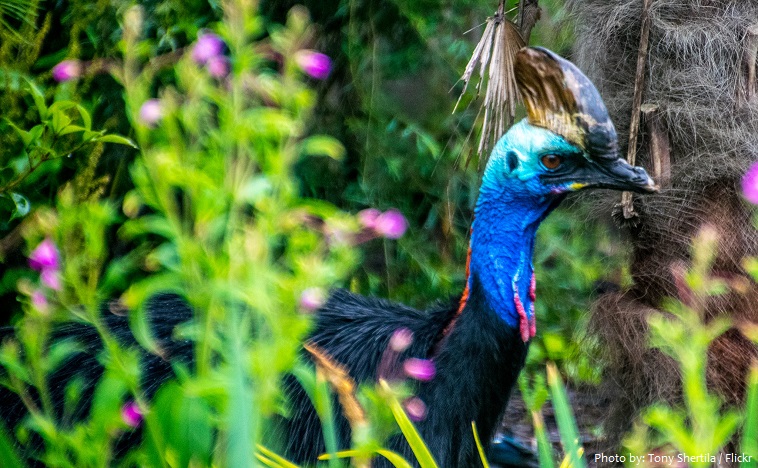
The cassowary is a large, flightless bird most closely related to the emu.
There are three extant species:
• the southern cassowary – the most common of three species
• the northern cassowary
• the dwarf cassowary – the smallest species
These fascinating birds range across Northern Australia, New Guinea, and surrounding islands.
Typically, all cassowaries are shy birds that are found in the deep forest. They are adept at disappearing long before a human knows they were there. The southern cassowary of the far north Queensland rain forests is not well studied, and the northern and dwarf cassowaries even less so.

Although the emu is taller, the cassowary is the heaviest bird in Australia and the second heaviest in the world after its cousin, the ostrich.
Southern and northern cassowaries are 1.5 to 1.8 m (5–6 ft) tall and weigh from 29 to 58.5 kg (64 to 129 lb). The dwarf cassowary between 100 and 150 cm (3.25 and 4.92 ft) long and weighs between 17.6 and 26 kg (39 and 57 lb).
It is covered in dense, two-quilled black feathers that, from a distance, look like hair. These feathers are not designed for flight but for protection in the cassowary’s rainforest habitat, keeping the bird dry and safe from the sharp thorns found on many rainforest plants. Long, strong bare quills hang from the bird’s tiny wings.
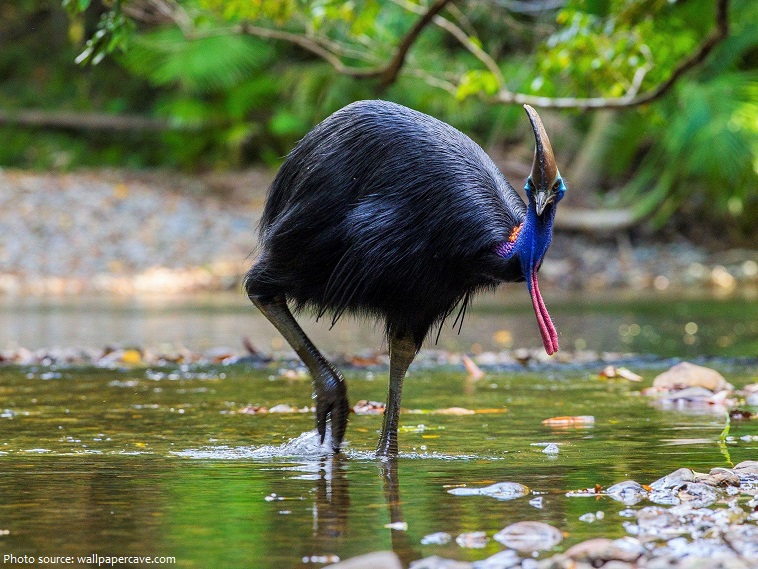
Cassowaries are generally jet black as adults, but the fabulous skin colors on their face and neck vary according to species and location.
All three cassowary species have a casque, also called a helmet, that starts to develop on top of their head at one to two years of age. The casque is made of a sponge-like material and covered with a thick layer of keratin, the same thing our fingernails are made of. Although it is quite sturdy, the casque can be squeezed in the middle fairly easily.
Cassowaries are extremely difficult to observe and study, as they are quick to retreat in their thick rainforest home, so little is known about their behavior. They seem to be most active at dawn and dusk (called crepuscular behavior), when they search for food, resting in a spot of sun during the day.
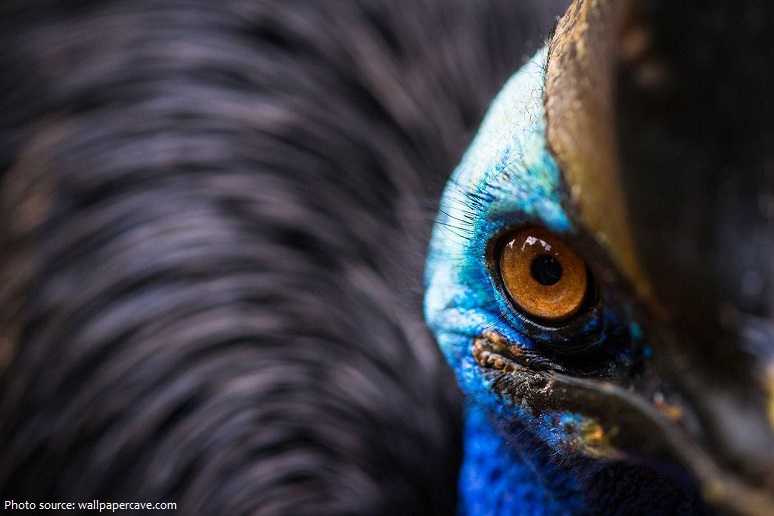
These birds can run at up to 50 km/h (30 mph) through the dense forest and can jump up to 1.5 m (5 ft). They are good swimmers, crossing wide rivers and swimming in the sea.
The booming sound a cassowary makes is the lowest known call of any bird and is right at the edge of human hearing.
Cassowaries prefer fallen fruit, but will eat small vertebrates, invertebrates, fungi, carrion and plants. Over 238 species of plants have been recorded in the southern cassowary diet.
Cassowaries are solitary most of the year, living in loosely defined home ranges. If two males meet accidentally, they stretch, fluff up their feathers, and rumble at each other until one decides to leave. But if a male meets a female, she can usually make him run merely by stretching a little and staring quietly!
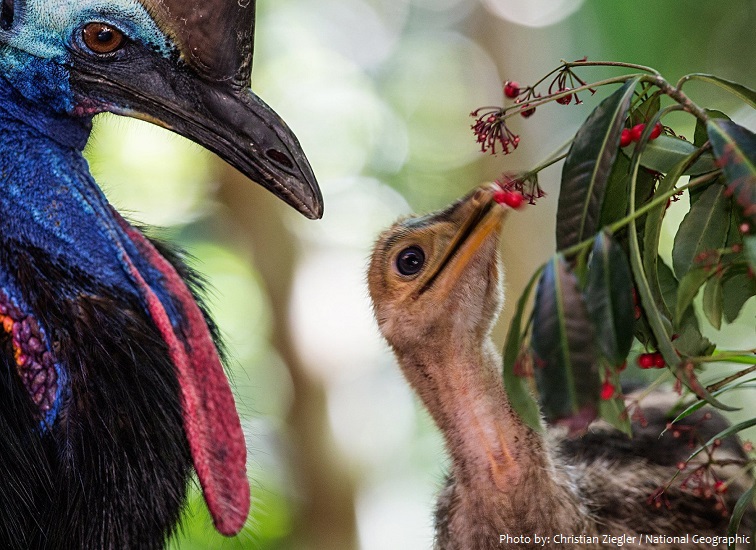
The female lays three to six green eggs, each of which is about 13 cm (5 inches) long and weighs 650 grams (23 ounces). The male incubates those for about 50 days in a leafy nest on the ground and may provide most of the early care of the striped young.
The average lifespan of wild cassowaries is believed to be about 40 to 50 years.
With its black iridescent feathered body, its blue, turquoise and magenta neck and horned crest or casque, it’s been described as looking like a “high-fashion dinosaur.”
Dutch traders first brought this bird from New Guinea to Europe in 1597.
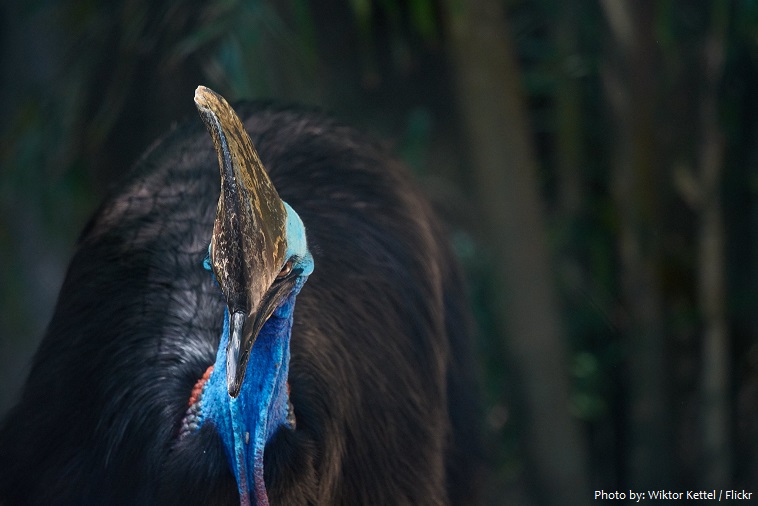
Wealthy European collectors sought cassowaries for display in private menageries in the 16th and 17th centuries.
Cassowaries are rarely hatched in zoos and chicks are difficult to care for.
The name cassowary seems to be of Papuan origin. “Kasu” means horned, and “weri” means head, referring to the bird’s casqued or helmeted head.
Some people in New Guinea believe that cassowaries are reincarnations of female ancestors, while others believe that the cassowary was the first mother.
The cassowary has often been labeled “the world’s most dangerous bird”.
During World War II American and Australian troops stationed in New Guinea were warned to steer clear of these birds.
It has been known to kill human beings with slashing blows of its feet, as the innermost of its three
toes bears a long daggerlike nail.
